One of the best ways to learn about London’s history is by literally drinking your way through some of London’s oldest pubs. No, seriously! We learned more about the Great Fire, wars and London’s literary links on a historic London pub tour than on all of our previous dozen or so jaunts in to London combined.
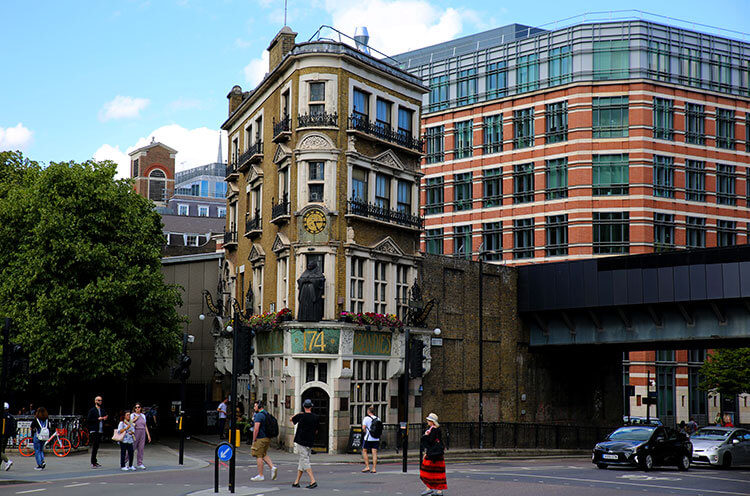
A London Historic Pub Crawl through the City of London
A first little fun fact about London: the metropolis is made up of 33 districts and the City of London, or simply “the City” as it’s known by locals, is the oldest part of London. Though these days some of London’s most famous modern skyscrapers call the City of London home and its known as the financial and business center of London, its history goes back to the Romans forming a settlement there in 1AD.
As the City of London is the oldest part of London, it should come as no surprise that some of oldest pubs in London can also be found there. And it should also be no surprise that some of the finest short term apartments in London can be found nearby. If you’re going on a London pub crawl and don’t want to tote around all your stuff with you, you can find some convenient luggage storage in London nearby while you enjoy the tour.
Fittingly, we met our guide Nigel at St. Paul’s Cathedral to begin our tour of historic London pubs. The pubs we’d be visiting all have a story to tell, and most have links to the Great Fire of London in 1666. City of London pubs also wouldn’t be the only sights we’d see. We’d not only get a few pints of beer, but a London history tour along the way.
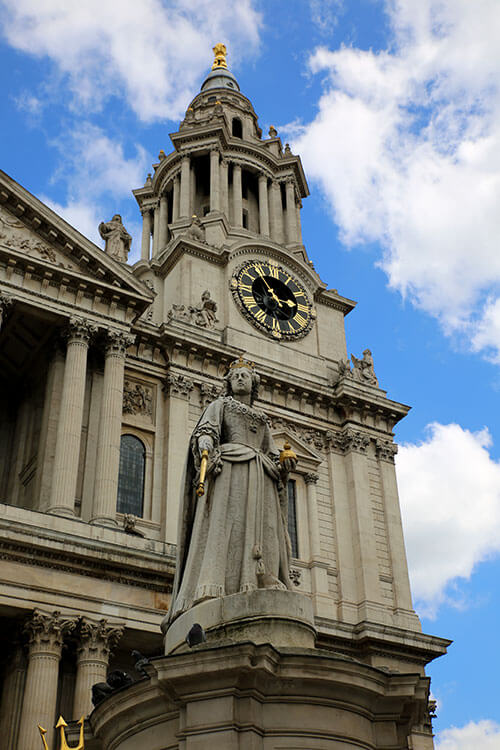
This one square mile in the center of London was once home to a whopping 140 churches and a mind blowing 3000 pubs and bars. But when the Great Fire of London swept through for nearly five days in September of 1666, it consumed over 13,000 houses and buildings and burned 87 churches, including St. Paul’s Cathedral. By the time the fire was finally extinguished, it had gobbled up a third of London.
We say our pub tour fittingly began at St. Paul’s Cathedral because it was the architect Sir Christopher Wren who not only rebuilt the cathedral, but much of the City of London after the Great Fire. St. Paul’s Cathedral was already in a state of disrepair prior to the fire. Only one week before the Great Fire was kindled on Pudding Lane, a plan was agreed upon for Sir Christopher Wren to restore St. Paul’s and add a dome to it.
After the Great Fire, Sir Christopher Wren rebuilt 52 churches in the City of London, including St. Paul’s Cathedral. Completed in 1710, the cathedral is considered Wren’s masterpiece. St. Paul’s also became the symbol for the Church of England and a renewed capital.
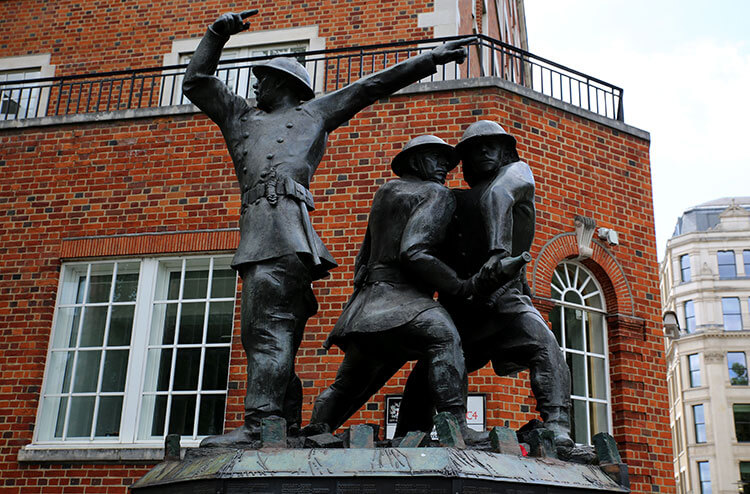
The Great Fire wouldn’t be the only event in history to drastically change London’s cityscape. Nigel pointed out the National Firefighters Memorial as we walked south from the cathedral toward Knightrider Street and some famous pubs near St. Paul’s. Though the memorial depicts three firefighters in action at the height of the Blitz, it is a reminder of all the firefighters killed in the line of duty throughout the United Kingdom.
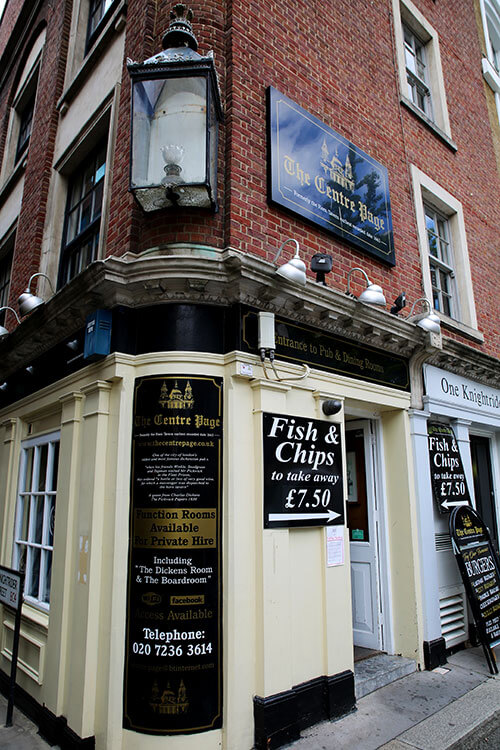
The Centre Page, formerly the Horn Tavern, has been standing since the 1660s. It’s recorded in writings as early as April 1663 when Samuel Pepys wrote about it in his famous diaries The Complete diary of Samuel Pepys. It not only survived the Great Fire of London in 1666, but managed to stand through the German’s air raids on London from 1940 – 1941 during WWII.
The Centre Page is also one of the most famous dickensian pubs. Charles Dickens mentioned the Centre Page, known at the time as the Horn Coffee House, in his first novel The Pickwick Papers.
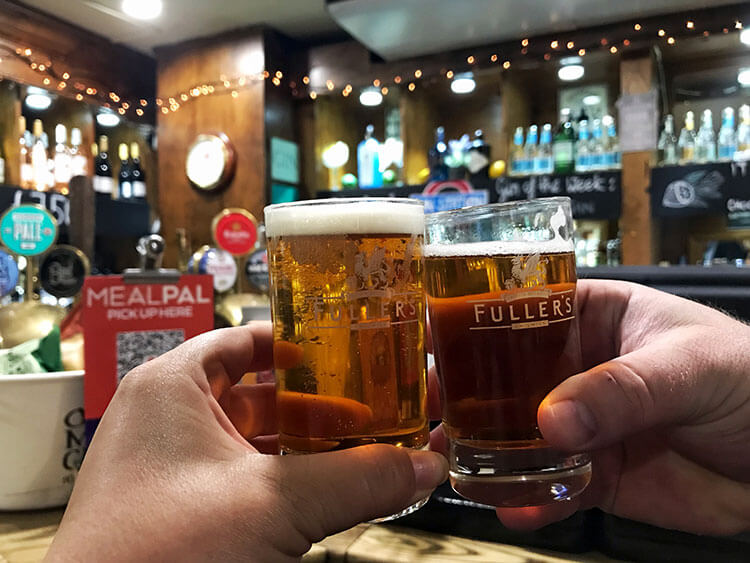
The Centre Page is known for their cask ales, and as with all the stops on Walks’ historical pub crawl, half pints were passed around to enjoy.
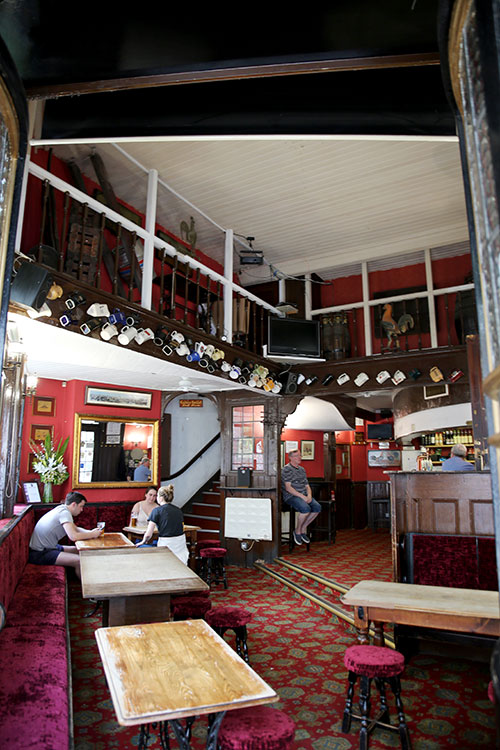
Wandering through the tiny lanes of the City of London, we came to one of the infamous backstreet boozers: The Cockpit. It gets it name from its sordid history of the cock fights that took place there. Looking at the surviving gallery, it’s easy to imagine a time when Londoners whooped and yelled from the high galleries around the pit while throwing back booze and gambling as feathers fluttered up toward the 18-foot high ceiling.
One of the more interesting pubs in London, it dates back to the 1800s. The Cockpit wasn’t likely the site of bloody battles between cockerels for too long though, since cock fighting was banned in 1835.
But the history in this building wasn’t always so fowl (see what I did there?). Before it was a pub, the building is said to have been owned by William Shakespeare himself two centuries before cock fighting took place here.
Today The Cockpit is known as one of the best pubs in the City of London. You’ll find a good selection of draft beers and a friendly and warm atmosphere.

One of the newer pubs, at least in terms of London history, we visited was the Blackfriar Pub. Nigel also proclaimed it to be his favorite. And of all the pubs near Blackfriars, it’s also many a local’s favorite watering hole while waiting on the infamously delayed transportation at Blackfriars Station.
Built in 1875 on the site of a 13th century Dominican Priory, we’re lucky to have this beautiful pub left in London today. It was nearly demolished in the 1960s, but it was saved in a campaign led by the poet Sir John Betjeman. It’s now a Grade II-listed building.
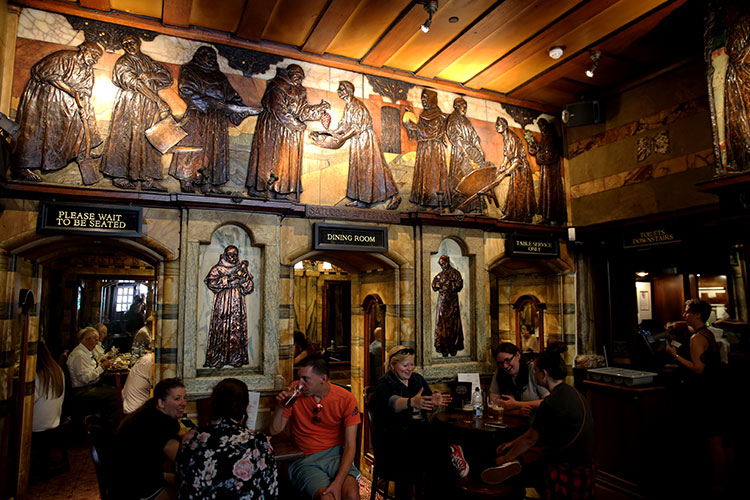
Over half pints of the seasonal cask ales available on tap that Nigel selected for us, we heard a bit more about the Dominicans whose long black robes earned them the name Black Friars. In homage to the Black Friars, every where you look the pub is decorated with wooden panel reliefs, statues and even stained glass windows depicting jolly, smiling Black Friars. It’s certainly the atmosphere that makes Blackfriars one of the best pubs in London.
Since medieval times, Fleet Street, named for London’s famous buried river that runs beneath it, has been known for its copious amount of pubs. So it’s no surprise that several of the most historic pubs in London can be found on Fleet Street. And that’s precisely why we headed off toward Fleet Street.
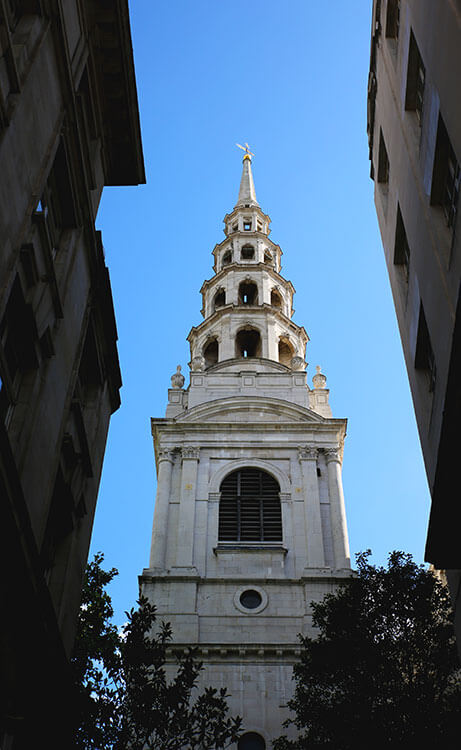
Nigel snaked through the back lanes for a look at another of Wren’s masterpieces first. Though a church has stood on the site of St. Bride’s Church since at least the 7th century, the current one was designed by Sir Christopher Wren and completed in 1675. It’s Wren’s second tallest church, with only St. Paul’s standing taller.
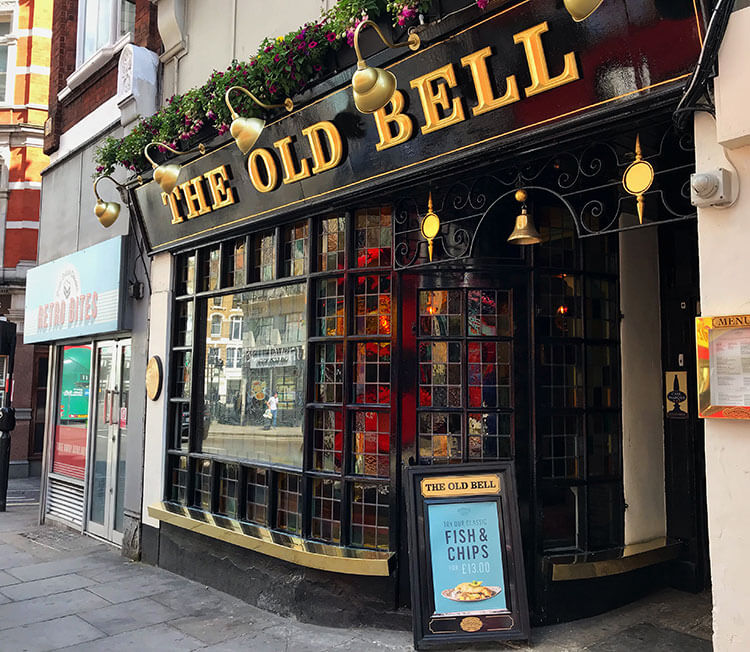
The church looms over another building Wren designed: the Old Bell Tavern. It was established in 1670 and is the second oldest pub in London. There had previously been a tavern that stood in same the spot, but it consumed by the flames of the Great Fire. Wren rebuilt the pub for the masons working on rebuilding St. Bride’s Church after the Great Fire of London. At one time, one of London’s first printing presses even operated here around 1500.
The Old Bell quickly became the Fleet Street pub of choice among the many printers and journalists working nearby. Hanging near the bar a framed copy of the Daily Mail, which was published the morning after the Blitz, proclaims “St Paul’s stands unharmed in the midst of the burning city”.
The best seat in the tavern is at the front at the tables near the stained glass window, where a kaleidoscope of colors dances on the floor.

Less touristy and frequented than another of London’s oldest taverns, the nearby Ye Olde Cheshire Cheese, the Old Bell Tavern is known for its craft beers. The ales change seasonally and Nigel selected two for our small group to try.
It’s also worth nothing that the Old Bell Tavern has a long history of not only attracting drinkers, but foodies too. It was recommended as far back as 1815 when the pub appeared in London’s first ever good food guide, The Epicure’s Almanack of 1815. It’s no wonder The Old Bell Tavern is known to be among the best old pubs in London.

Our pub crawl ended just a short walk down Fleet Street from the Old Bell at another of the famous pubs in London. The Tipperary was built with stones taken from the Whitefriars Monastery in 1605, and the pub managed to survive the inferno of the Great Fire of London in 1666.
It was originally called The Boar’s Head, until it was purchased by Mooney’s Brewery of Dublin in 1700. The name was then renamed to The Tipperary to commemorate the Great War song.
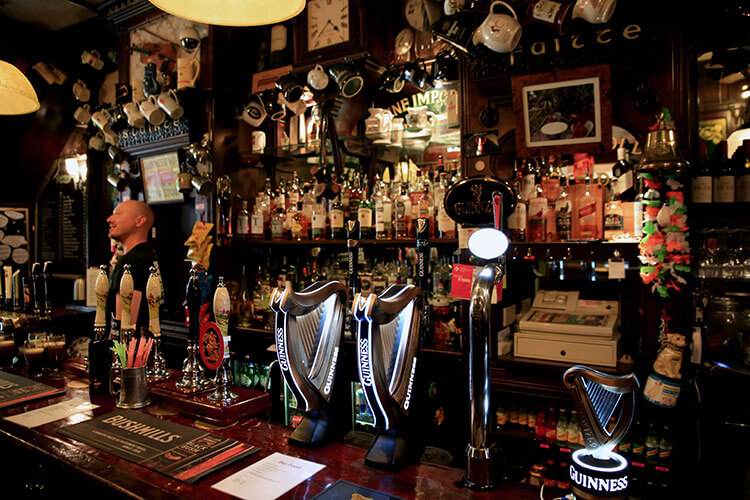
As proclaimed by a sign outside, they claim to be the first Irish pub in London and the first to sell Guinness in England. Whether or not the claim is actually true is debated, but there’s no denying they’re proud of their Irish heritage. Shamrocks abound in the mosaic tile floor and Guinness is on tap.
While you could go on your own pub crawl of these City of London historic pubs, you’d be missing out on the hidden sites and interesting facts we learned along the way by taking a guided tour.
At around $22 per person (the average cost of a pint of beer in London is around £5 or about $6), it was well worth it for the good beer and entertaining history lesson. Leaving in the afternoon, it’s the best pub crawl in London if you want something a little more low-key, want to learn some interesting history of London and are looking for recommendations of the best pubs in London.
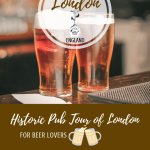
Jean says
This looks like such a great tour. I’m not a beer drinker but love how the Brittish pubs also have cider on tap!
Juergen Klein says
I don\’t know if for me a Historic London Pub Tour would be the best way to learn about the city. I\’m not a beer drinker and I never drink before the evening… In any case, I would assume that alcohol would probably cloud my memory of all the facts to remember from the tour.
I was surprised to read that the Old Bell Tavern, established in 1670, is the second oldest pub in London. In small villages of the UK you can often find historic pubs dating back to the 12th, 13th, or 14th century.
Jennifer Dombrowski says
You can enjoy a beer or a drink without getting drunk. With walking and taking time between each of the pubs to see little known about sites in the City of London, everyone from our small group enjoyed and remembered the tour.
Small villages in the UK didn’t have the Great Fire that basically obliterated London. The City of London is the oldest part of London and the fire ravished it. Over 1/3 was destroyed. So it’s really not surprising that the Old Bell is the second oldest pub in London.
Hannah says
I can’t believe the Blackfriar pub was nearly demolished! The 1960s have a lot to answer for architecturally! The Old Bell used to be our “local” near my office, so is a favourite of mine. I don’t drink beer, but enjoyed Thistly Cross cider amongst other tipples!
Danik says
And the funny thing is after looking at this post… I drank in all of the pubs! 😀 Black Frair is my favorite, I love the architecture there and they serve my favorite craft beer. Not bad food in there either 🙂
Linda (LD Holland) says
We are in London in August. So maybe we will follow you on a pub tour! Hubby does love his thick stout beers. Great to get a little sightseeing and history on your pub tour too. Although by the end of a pub crawl I might not be remembering much. We will definitely want to visit the Cockpit if it is one of the best pubs in London. Interesting that the Old Bell Tavern was rebuilt by Wren after the Great Fire.
sherianne says
I love how ornate the pubs are in England. I did a DIY pub crawl through London’s Fleet Street and I see now that was a mistake, the history provide on a tour is what brings these places to life
Chris Bloomfield says
The Blackfriar Pub sounds like a church where you can drink beer and that is pretty cool! The Old Bell Tavern must be doing something right in the kitchen, since it has been recommended for more than two hundred years! I love history, so this walk sounds like something I would love to do.
Rosemary says
Even though I’m not a beer drinker, I do appreciate exploring a place through a historical food or drink. The pubs you visited each have an amazing story to tell. The decor in the Blackfriars is quite impressive and it is no wonder it is so popular. What a fun and unique way to explore London, while drinking and tasting the local culture.
Tami Wilcox says
3000 pubs and bars! Oh my gosh! I’m always up for a good historic tour, and I’m actually headed to London next month, so this was very intereting to me. There’s so much to do and see in London, I’ve been challenged narrowing it down, but I will check into this!
Andi says
I have been lucky enough to visit London on business and was taken to pubs after work, it is such a unique and fun culture! I love food and beverage tours, so doing one on pubs would be a lot of fun!